Table of Contents
Alpha-Lipoic Acid (ALA) is a sulfur-containing fatty acid naturally found in your body. Lipoic acid is unique among other antioxidants because it is both water- and fat-soluble.
You get small amounts of lipoic acid in your diet from spinach and collard greens, broccoli, beef and organ meats.
But lipoic acid declines in your body as you age. So you need to supplement with Alpha-Lipoic Acid to achieve the levels your body needs to run optimally.
With the unique ability to work in all cell environments, lipoic acid can neutralize free radicals. Damaging free radicals resulting from oxidation in cells is implicated in many types of age-related diseases.
Lipoic acid can navigate cells throughout your body. Which means it can also easily cross the blood-brain barrier.
Alpha-Lipoic Acid has powerful protective benefits against cognitive and neurological diseases like Alzheimer’s, Parkinson’s and depression.
Alpha-Lipoic Acid helps:
- Protect Neurons. Alpha Lipoic Acid has a powerful ability to neutralize the damaging effects of oxidative stress. Studies show lipoic acid even reducing brain damage after a stroke.[i]
- Neurotransmitters. Lipoic acid boosts the production of acetylcholine and glucose uptake in the brain. Showing promise in preventing or managing Alzheimer’s Disease.[ii]
- Brain Energy. ALA regenerates other depleted antioxidants (Vitamins C & E, glutathione), and recycles CoQ10. Reducing inflammation, and getting rid of heavy metals. Boosting cellular energy and memory.
Overview
Alpha-Lipoic Acid is an antioxidant produced in small amounts in your body. You also get it from eating spinach and collard greens, broccoli, beef and organ meats.
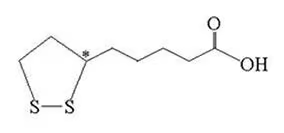
Alpha-Lipoic Acid (ALA) is a unique antioxidant because it is both water- and fat-soluble. Meaning it works in all parts of the human cell. The more lipoic acid you have in your system; the more antioxidant benefits you experience.
You need alpha-lipoic acid’s antioxidant power. Because it regenerates other antioxidants that were depleted by the ongoing fight with free radicals in your cells. It allows you to use the antioxidants Vitamin C & E, glutathione and CoQ10 already in your body over and over again.
In fact, alpha-lipoic acid is so efficient at what it does, it boosts the energy in your cells while reducing inflammation, and getting rid of heavy metals.
In your brain, alpha-lipoic acid boosts the production of the neurotransmitter acetylcholine. And even increases glucose uptake in brain cells. Providing you with a boost of mental energy.
Alpha-Lipoic Acid is used throughout your body. It helps increase insulin sensitivity which reduces the threat of diabetes. And ALA reduces the chances of metabolic syndrome which is associated with cardiovascular disease, diabetes and weight gain.
Alpha-Lipoic Acid vs. S-Lipoic Acid vs. R-Lipoic Acid
Lipoic Acid is also known as Alpha-Lipoic Acid, ALA and Thioctic acid. The Alpha-Lipoic Acid you get as a supplement is usually a 50/50 mixture of R-(natural) and S-(unnatural) enantiomers. They are mirror images of each other and called a ‘racemic’ mixture.
Most commercially available forms of Alpha-Lipoic Acid include the ‘S-form’, or unnatural form of lipoic acid. Chemically synthesized in 1952, and not found in nature.
It is thought that the two enantiomers differ biologically. But much of the research done over the last 30 years has been with the racemic version of Alpha-Lipoic Acid because the R-form was not commercially available.
S-Lipoic Acid (the enantiomer not found in nature) may not produce the most essential properties of Lipoic Acid. Including interactions with proteins, enzymes and genes.
 R-Lipoic Acid is the form of lipoic acid occurring naturally in the human body, animals, and plants. This is the only form that functions as a co-factor for mitochondrial enzymes involved in energy production.
R-Lipoic Acid is the form of lipoic acid occurring naturally in the human body, animals, and plants. This is the only form that functions as a co-factor for mitochondrial enzymes involved in energy production.
Be aware that most commercially available forms of Alpha-Lipoic Acid include both S- and R-forms of lipoic acid.
Alpha-Lipoic Acid is produced as a mixture because R-Lipoic Acid, when separated from the S-form, is very unstable. And deteriorates very quickly making it unusable as a dietary supplement.
Very few companies go through the complicated, expensive process required to remove the synthetic S-ALA from R-ALA. So unless the bottle specifically states 100% R-ALA, you’re getting a 50/50 blend.
Know that R-ALA may be up to 12 times more effective than S-ALA.
How does Alpha-Lipoic Acid Work in the Brain?
Alpha-Lipoic Acid boosts brain health and function in several ways. But two in particular stand out.
- Alpha-Lipoic Acid boosts acetylcholine, a neurotransmitter tied to memory and overall brain function.
ALA increases acetylcholine production by activation of choline acetyltransferase and increases glucose uptake. This process supplies more Acetyl-CoA for the production of acetylcholine.[iii]
- Alpha-Lipoic Acid is a promising weapon in the fight against neurodegenerative diseases like Alzheimer’s.
Oxidative stress plays a key role in cognitive disorders because neurons are highly vulnerable to free radical damage.
A recent study showed that lipoic acid may help slow down the progression of Alzheimer’s Disease. An area where no known cure has been produced by the big pharmaceutical companies.
In this study 43 patients with dementia were given 600 mg of Alpha-Lipoic Acid daily for 4 years. Researchers concluded from this study, “alpha-lipoic acid might be a successful ‘neuroprotective’ therapy option for Alzheimer’s disease.”[iv]
How things go bad
As we get older, our brain chemistry and metabolism changes.
↓ Acetylcholine levels decline
↓ Oxidative (free radical) damage in neural cells
↓ Heavy metal accumulation in cells
All of these age-related changes are contributing factors to the neurodegenerative diseases of aging, including Alzheimer’s, Parkinson’s and dementia. But even if you’re not concerned with the effects of aging, Alpha-Lipoic Acid can help.
Alpha-Lipoic Acid benefits
Research from hundreds of studies have shown that Alpha-Lipoic Acid will:
- Increase the production of acetylcholine
- Improve memory and learning ability
- Restore the health of neurons
- Boost cognitive performance and memory in Alzheimer’s patients.
Alpha-Lipoic Acid is both water- and fat-soluble and quickly crosses the blood-brain barrier after you take it.
ALA improves your brain function and learning processes by directly increasing the production of acetylcholine.
Alpha-Lipoic Acid also helps regenerate depleted antioxidants in your system including Vitamins C and E, glutathione and Coenzyme Q10.
By reducing inflammation and heavy metals in your brain, you boost cognitive processes and fluid thinking.
How does Alpha-Lipoic Acid feel?
You may not feel ALA… unless you’re diabetic or have Alzheimer’s. Within these specific groups, Alpha-Lipoic Acid helps with nerve pain, memory, recall and mental performance.
Alpha-Lipoic Acid’s provides brain support because it has the ability to boost acetylcholine. So should boost cognition in all age and gender groups.
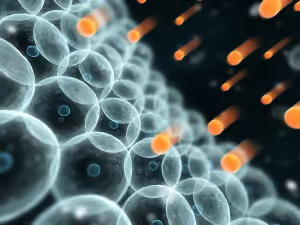 Your entire body, even your DNA is under endless assault. This assault is caused by everything from poor diet to pollution. And your brain cells are getting hit by free radicals thousands of times per day. This oxidation is damaging your cells.
Your entire body, even your DNA is under endless assault. This assault is caused by everything from poor diet to pollution. And your brain cells are getting hit by free radicals thousands of times per day. This oxidation is damaging your cells.
Antioxidants fight back against these free radicals. When you supplement with Alpha-Lipoic Acid, not only are you using arguably the most effective free radical scavenger on the planet. You’re regenerating antioxidants like Vitamin C & E, glutathione and CoQ10.[v]
And they join the fight against free radicals alongside Alpha-Lipoic Acid.
Alpha Lipoic Acid Clinical Research
Alpha-lipoic acid plays an essential role in mitochondria. The heart of energy-generation in the human cell. Scientists at Emory University School of Medicine found ALA can stimulate telomerase, the enzyme that lengthens telomeres.
The effects of many chronic diseases can be traced back to telomere shortening. (Telomeres are the ‘caps’ on the end of each chromosome in your DNA).
Any treatment that can restore healthy telomeres has great potential in the fight against chronic disease.
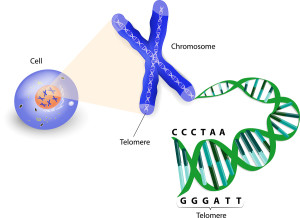 In this study scientists showed Alpha-Lipoic Acid boosted the production of PGC1-alpha. The telomerase that lengthens telomeres. And they did it in just one day of treatment.[vi]
In this study scientists showed Alpha-Lipoic Acid boosted the production of PGC1-alpha. The telomerase that lengthens telomeres. And they did it in just one day of treatment.[vi]
Alpha-Lipoic Acid Reduces Wrinkles
A topical solution of 5% Alpha-Lipoic Acid was applied to the faces of volunteers. This double-blind, placebo-controlled trial showed a reduction in facial lines, almost complete eradication of fine lines, and an overall improvement of skin color and texture in most volunteers.[vii]
Alpha-Lipoic Acid Critical for Cellular Energy
Cellular energy is behind every single action that happens in your body. Including your brain. Cellular energy is required for muscle movement, producing new cells, wound healing and thinking.
The mitochondria in each of your cells is the source of this energy. This ongoing energy production process is call the Krebs Cycle. Alpha-Lipoic Acid is a cofactor to two key enzymatic reactions within the Krebs Cycle.
In the simplest terms, without ALA, cellular energy is not possible. And without cellular energy, well… life is not possible.[viii]
Memory Loss Reversed with ALA and Acetyl-L-Carnitine
Accumulated oxidative damage to brain cell mitochondria eventually leads to neuronal and cognitive dysfunction.
One study on rats showed supplementing with ALCAR and Alpha-Lipoic Acid improved memory. By lowering oxidative damage and improving mitochondrial function.[ix]
Alpha Lipoic Acid recommended dosage
Taking Alpha-Lipoic Acid with a meal decreases it bioavailability. So we recommend taking ALA on an empty stomach (1 hour before eating).
Most Alpha-Lipoic Acid supplements contain a 50/50 mixture of R-LA and S-LA. Supplements claiming to contain only R-LA are often more expensive. And information regarding their purity is not often available.
Peak plasma (blood) concentrations of R-LA were found to be 40-50% higher than S-LA. This suggests that R-LA is better absorbed than S-LA.[x]
The only pre-formulated nootropic stack that I’ve been able to find that uses pure R-LA, and which I use and highly recommend is Performance Lab® Energy which contains 100 mg of the patented Bio-Enhanced® version of R-Lipoic Acid. Which is up to 12-times more effective than other regular alpha lipoic acid supplements.
- Alpha-Lipoic Acid dosage for cognitive benefits is 2- 600 mg per day.
- ALA dosage for diabetic neuropathy is 800 mg per day divided into two doses.
- Alpha-Lipoic Acid dosing for antioxidant benefits is 50 – 100 mg per day.
Alpha Lipoic Acid Side Effects
Side effects for using Alpha-Lipoic Acid as a supplement are generally rare. But can include diarrhea, fatigue, insomnia and skin rash.
Alpha-Lipoic Acid can lower blood sugar levels. So if you have diabetes or low blood sugar, you should take Alpha-Lipoic Acid under the supervision of your doctor.
Alpha-Lipoic Acid supplementation can lower levels of thyroid hormone. So get your thyroid labs done when using ALA. And adjust your dosage of both ALA and thyroid meds accordingly.
Alpha-Lipoic Acid can lower levels of Vitamin B1 (Thiamine). This can be dangerous for alcoholics, or in cases of malnutrition. It would be wise to add Vitamin B1 or Sulbutiamine if your taking ALA.
The chemical structure of Biotin is similar that Alpha-Lipoic Acid. And there is some evidence that ALA can compete with Biotin for transport across cell membranes. This may require higher doses of Biotin if you’re using ALA.
Best type of Alpha Lipoic Acid to buy
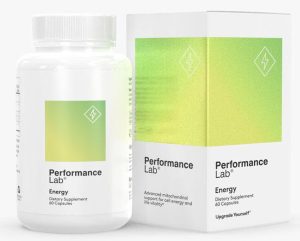 Most Alpha-Lipoic Acid available as a supplement is a 50/50 combination of R-LA and S-LA. S-LA is the synthetic version of ALA and not found in nature.
Most Alpha-Lipoic Acid available as a supplement is a 50/50 combination of R-LA and S-LA. S-LA is the synthetic version of ALA and not found in nature.
R-LA and S-LA are combined because R-LA is highly unstable on its own. And degenerates quickly.
Studies have shown that 30-40% of an oral dose of Alpha-Lipoic Acid is absorbed. Oral ALA supplements are better absorbed on an empty stomach. Taking ALA with food reduces total plasma (blood) concentrations by about 30%.
The sodium salt version of R-LA may be better absorbed than free lipoic acid, likely because of it higher solubility. And is up to 12-times more effective than other alpha lipoic acid supplements.[xi] I use and highly recommend Click for Performance Lab® Energy .
Nootropics Expert Recommendation
Alpha-Lipoic Acid 50 – 600 mg per day.
I recommend using Alpha-Lipoic Acid as a nootropic supplement.
Your body does make some Alpha-Lipoic Acid on its own. And from the food you eat. But the science is clear that supplemental ALA is a potent antioxidant. And acetylcholine booster.
Alpha-Lipoic Acid can lengthen telomeres which is great for your neurons. And neurogenesis (new neuron creation).
ALA also helps regenerate antioxidants already in your system that have been depleted while doing their job. Of getting rid of free radicals in your cells. So you get a double benefit while using Alpha-Lipoic Acid in the antioxidant department.
Alpha-Lipoic Acid also helps in the creation of acetylcholine. Which boosts all cognitive functions including memory, recall, focus and concentration.
ALA is especially helpful for those suffering with diabetes. Studies show it helps relieve diabetic neuropathy or nerve pain. But care must be taken because ALA can lower blood sugar levels. So work with your doctor is using Alpha-Lipoic Acid.
I suggest starting with a dose of 400 mg daily. And work your way up to 600 mg per day. Taken in two doses during the day. Alpha-Lipoic Acid is often stacked with B-vitamins.
I use and highly recommend Click for Performance Lab® Energy .

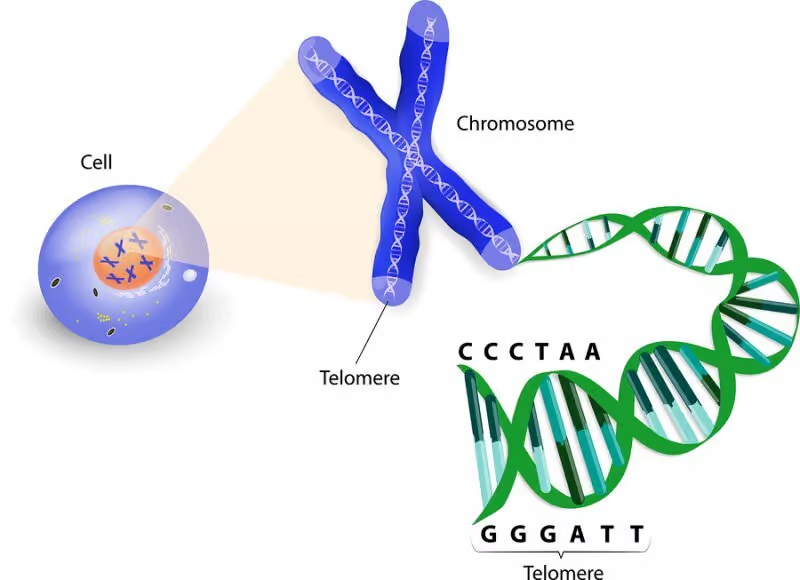








Join The Discussion - 138 comments
Steve-O
July 20, 2019
600 mg of alpha lipoic acid a day has given me some hope from hopelessness. I am 52 and in a period of about 2-3 months starting in December 2018, diabetic neuropathy came on like a house afire and took over my life. Tried Gabapentin from my doctor which worked on the pain but no way no how could I function when taking it. Truthfully, this website gave me so many things to try, between the ALA, CBD and vinpocetine, Omega 3s and vitamin D, and a little bit of Kava, I believe I am healing my nervous system. All of which I learned about here. I am not needing gabapentin at all now. Thank you David for an amazing website. Any other nootropics that you think may help? Right now I feel better than I have in some time.
David Tomen
July 22, 2019
Steve, you’re on the right track. I know what you mean about Gabapentin as well.
I suggest doing a search of Nootropics Expert for certain keywords like “inflammation”, “diabetes”, and whatever other symptoms you can come up with. And see what turns up.
I think the key is to start with tamping down inflammation. You’ve already experienced some success with ALA because it helps control oxidative stress, and boosts your body’s immune system by regenerating other depleted antioxidants (Vitamins C & E, glutathione), and recycles CoQ10.
Steve-O
July 22, 2019
Thanks again, I will do that, continuing my researching. The ALA took about a week for me to notice it was doing anything for it, but it definitely kicked in and helped significantly.
Dave
May 1, 2019
Hi David
I would be interested to know your findings/personal experience about Alpha Lipoic Acid (ALA) and risk of hypoglycemia?
Thanks.
David Tomen
May 2, 2019
Dave, it’s something to be aware of and the reason I included this statement in the Side Effects section of this review, “Alpha-Lipoic Acid can lower blood sugar levels. So if you have diabetes or low blood sugar, you should take Alpha-Lipoic Acid under the supervision of your doctor.”
Yordan Trifonov
February 15, 2019
Hi David. Does hot water or hot beverages in general affect the absorption of R-ALA?
Best regards
David Tomen
February 15, 2019
Yordan, not that I am aware of. The biggest issue with Lipoic Acid is competition for transporters with other amino acids. Which is why its best to take it an hour before or two hours after eating.
Wim
January 2, 2019
Thanks David,
After a year of reading and creating a stack, I now start to go deeper in all more to balance their interactions. (Blood tests still show variable results over time)
I started a year ago with ALA.
And now reading that one study in healthy mice suggests that long term treatment may be liver toxic. https://www.ncbi.nlm.nih.gov/m/pubmed/26876280/
The study used 20mg/kg.
I think of 2 solutions for this:
1) cycling, but then what cycling? As in month on and month off?
2) Or lower dosage to play safe.
You wrote that the R-LA is 12x more potent. & higher absorption .
So taking 100mg R-LA = 1200mg S-LA or 600mg ALA mixed.
Is this a right asumption that 200mg R-LA has the equivalent of 1200mg ALA in force but for the liver only counted as 200mg of any form ALA and hereby only 2,5mg/kg for average 80kg person. With this for most people it won’t exceed 20% of the long term toxic level of above 20mg/kg/day.
Just an idea …
David Tomen
January 2, 2019
Wim, in my research I’ve found that R-LA “may be up to 12X more effective” and NOT “potent”. With an emphasis on the “may” and “effective”. I would not assume that 200 mg of R-LA if like 1200 mg of ALA using a mix of the two.
I do find that the 150 mg of R-LA in Performance Lab Energy in the form they use is very effective. And I’m not concerned with liver toxicity either. But I do use Milk Thistle daily to be on the safe side primarily because I use Berberine which I know can be hard on my liver.
Wim
January 2, 2019
Thanks David,
That was my 3rd option to use Milk Tistle (as I am doing already) for the liver toxity .
If there is no multiple in toxity from R-La to ALA, then the 150mg is a safe option I presume.
“Metal Chelation
Alpha-Lipoic Acid (ALA) as well as its metabolite dihydrolipoic acid bind to metals in vitro, with the former binding to copper, lead, and zinc”
Taking Zinc at the same time or with a couple of hours gap between?
Thanks
David Tomen
January 3, 2019
Wim, should not make that much of a difference when you take you zinc. I like taking mine in the morning. And don’t forget that “in vitro” means this was shown in a test-tube and not in a living human cell or body.
Sherylin
October 18, 2018
I read your article after watching the video and bought some ALA
However the only kind available is
“DL-Alpha-Lipoic Acid” 100mg
Any idea what kind this is?
They did not have an SL or an RL kind at all.
Thank you for your reply. 🙂
Sherylin
David Tomen
October 19, 2018
Sherylin, DL-Alpha-Lipoic Acid is a “reduced form” of R-Lipoic Acid according to one manufacturer. Presumably it’ll be more bioavailable than other forms. From what I can tell it should be superior at least to the synthetic “S” form of lipoic acid.
Sherylin
October 20, 2018
Thanks. So I got a good one then. Cool 🙂
Thanks again for all of your help 🙂
Paul
April 6, 2018
contd from last post.
I haven’t started using the Alpha GPC or Piracetam yet and was wondering given the other supplements I use, would adding in Alpha GPC be overdoing it?
(As an aside I also have perpetual tinnitus in both ears which I believe is caused by nerve/brain issues rather than actual damage, is it possible that nootropics might help this condition as well?)
Many thanks for all your hard work.
David Tomen
April 7, 2018
You’ll need Alpha GPC when you are using Piracetam. Your brain will need the extra choline.
I also deal with tinnitus but it has gotten quieter in the last couple of years. Not sure what is working to tame it but it has.
Paul
April 7, 2018
Thanks David, so you don’t think adding Alpha GPC to the other choline sources I use will be over doing it? I guess it wont hurt me to experiment?
David Tomen
April 8, 2018
Paul, you can certainly overdo it by using too many acetylcholine precursors. But you’re right in that it doesn’t hurt to experiment. There is nothing dangerous here. Worst that could happen is you could take a mid-afternoon nap.
Paul
April 6, 2018
Hi David, thanks for the great website. I got here looking for information on Nootropics and am slowly working my way though all the data. For now I have a question that has popped into mind regarding R-ALA, ALCAR, Alpha GPC leading to having too much acetylcholine in my system? I currently take the following supplements
600 mg of R-ALA per day in three doses
1G of ALCAR
600 mg of NAC with 1g of Vit C 2-3 times a week
400 mg of Magnesium glycinate lysinate chelate in 2 doses per day
Various Chinese tonic herbs
Zinc 50 mg ( I rotate between RAW organic zinc, zinc glycinate and zinc picolinate )
COq 10 (Kaneka) 100mg
Vit D 1000iu
I am not on any meds nor do I have any known physical or psychological conditions. I eat healthy and exercise regularly. Despite all of the above I am pushing 53 and feeling the effects so have started this experiment in order to improve my level of focus, motivation and concentration which, while improving still has a way to go. I have ordered some Piracetam to try as my first nootropic
David Tomen
April 7, 2018
Paul, your stack looks good at the doses you are using. One way to recognize too much acetylcholine is you’ll start to feel sleepy or unusual fatigue.
You should add 2 mg copper to this stack because zinc lowers copper levels. And I use NAC and Vitamin C daily with good success. Boosts my immune system and when others are getting the flu or a cold in this house I seem to escape it.
Barb W.
September 7, 2017
Hi David.What is the half life of ALA? Wouldn’t a person have to take ALA around the clock so heavy metals aren’t dropped along the
way in the body before they could be excreted? And is it OK to
start at a low dose of 100 two or three times a day to see how I
feel w/ it? Barb
David Tomen
September 7, 2017
Barb, the half-life of ALA is about 30 minutes (https://www.ncbi.nlm.nih.gov/pmc/articles/PMC3176171/).
Heavy metals are predominantly stored in fat cells. ALA is reported to extract those heavy metals so your body can naturally dispose of them. I’m not a microbiologist so can’t give you a blow by blow of how ALA does this. But do know that stressing out about heavy metals hanging around will likely do more damage in the long run than the heavy metals themselves. My attitude is that I do my best to get rid of heavy metals and leave it at that.
It’s not practical to take ALA around the clock of course. But your idea of dosing it 2 or 3 times a day makes sense. And starting with a low dose of 100 mg at a time is good as well. I personally take one capsule mid-morning that contains R-ALA 300 mg and S-ALA 300 mg because I’m insulin resistant. And it works for me. So start low and go from there. Consult the “Dosage Notes” for the therapeutic range depending on what you’re trying to fix. But please make sure it’s well between any food intake.
Barb W.
September 8, 2017
Thanks so much David. If the half life is
around 30 min., how long would my
morning dose stay active until I should
take my afternoon dose? Barb
David Tomen
September 8, 2017
Barb, with a half-life of 30 minutes, the dose should stay active for at least an hour. I’d take the 2nd dose early afternoon. But an hour before or two hours after any food that would compete with its uptake.